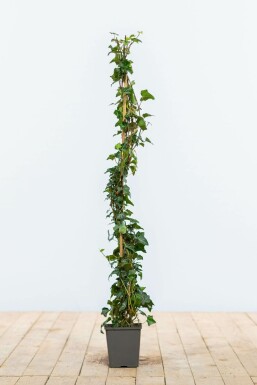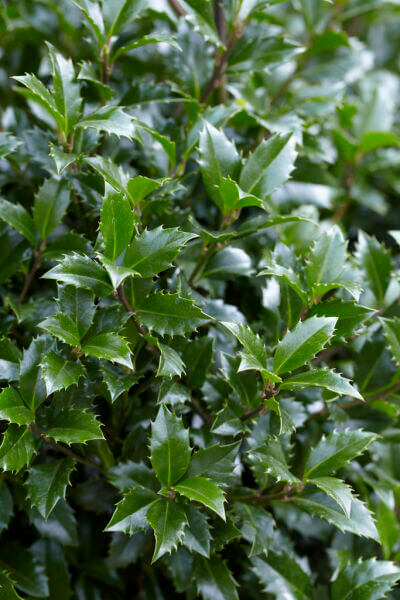Best Hedging Plants For Terrace Gardens
Best Hedging Plants For Terrace Gardens
Blog Article
Best Hedging Plants For Harsh Conditions
Boost your garden's attraction with lush hedge ranges such as Yew (Taxus), Thuja, Laurel, Photinia, and Bamboo, celebrated for their structural stability and environmental advantages.
Yew and Thuja provide evergreen coverage and winter season resilience, while Laurel provides quick growth and broad, fragrant leaves.
Photinia includes seasonal charm with its dynamic red foliage, and Bamboo provides a low-maintenance, serene ambiance.
These hedges enhance air quality, reduce noise, and develop tranquil, private spaces.
Appropriate planting, spacing, and upkeep ensure vigorous development and eco-friendly harmony.
Explore how these rich ranges can elevate your garden's beauty and wellness.
Key Takeaways
Transform Your Garden With Lush Hedge Varieties
- Select Yew for its thick, evergreen growth and unequaled durability.
- Choose Laurel for its quick development and broad leaves, guaranteeing fast personal privacy.
- Pick Photinia for its vibrant seasonal foliage, which turns a striking dark red.
- Utilize Bamboo for a low-maintenance, winter-hardy hedge with aesthetic appeal.
- Space plants 2-3 per meter and prune routinely for ideal development and health.
Popular Hedge Plants
When changing a garden with lavish hedge ranges, it's important to think about popular hedge plants such as Yew, Thuja, Laurel, and Photinia due to their special characteristics and advantages.
Yew (Taxus) is extremely respected for its durability and thick, green development, making it a prime option for sustaining landscapes.
Thuja is kept in mind for its evergreen foliage and robust winter season strength.
Photinia includes seasonal vibrancy with red leaves that darken gradually, producing vibrant visual appeal.
Laurel offers rapid growth and aromatic, broad leaves, perfect for fast personal privacy.
Furthermore, Bamboo is an outstanding choice for ambiance, offering a low-maintenance, winter-hardy option that boosts the garden's visual with its classy, swaying walking canes.
These choices accommodate a variety of horticultural requirements and choices.
Benefits of Garden Hedges
Garden hedges provide a wide variety of benefits, making them a valuable addition to any landscape. These natural barriers are cost-efficient to execute and offer significant wind defense, boosting air flow and contributing to sound decrease. The thick foliage of hedges like Thuja and Beech ensures personal privacy by blocking visibility, developing a peaceful and secluded environment.
Hedges also play an important function in microclimate policy, providing a steady environment that fosters plant development and reduces temperature level changes. Their intricate leaf structures filter toxins, improving air quality and adding to a healthier garden community.
Moreover, hedges master noise decrease, absorbing and deflecting acoustic waves to lower ambient noise levels. This double performance of offering both visual and acoustic privacy boosts the overall harmony and aesthetic appeal of any garden.
Planting and Upkeep Tips
For an effective hedge, careful preparation of the planting area is important. Make sure the soil has proper pH and drain to support strong root advancement.
Space the plants properly for the picked species. Water the hedge often throughout its preliminary growth stage, changing as needed with seasonal changes.
Execute a organized pest control and disease prevention method, utilizing natural or chemical treatments when essential. Regularly inspect for aphids, mites, and fungal infections.
Apply mulch to maintain wetness and reduce weeds. Seasonal pruning promotes dense growth and air circulation, vital for plant health.
Following these standards will assist you cultivate a lively, well-maintained hedge that enhances the charm of your garden.
Spacing and Trimming Standards
Spacing and Cutting Standards
Correct spacing and cutting are vital for cultivating healthy, aesthetically appealing hedges. Adequate spacing ensures each plant receives sufficient nutrients, light, and airflow.
Follow these guidelines for optimal hedge upkeep:
- Spacing: Position hedge plants 2-3 plants per meter to motivate robust development.
- Pruning Strategies: Regular pruning is essential for maintaining desired hedge height and shape. Cut brand-new development in summertime and cut back older wood during winter.
- Seasonal Care: Adjust cutting techniques and schedules according to seasonal requirements to guarantee plant health.
- Hedge Height: Regularly monitor and cut to preserve the preferred hedge height and achieve uniform aesthetics.
Following these actions will guarantee your hedge grows, improving both the appeal and functionality of your garden.
Choosing the Right Hedge
Choosing the Right Hedge
Selecting the proper hedge involves evaluating factors such as fully grown height, foliage density, and ecological durability. Effective hedge plant choice requires understanding each species' development qualities and site-specific adaptability.
For example, Yew (Taxus) uses exceptional longevity and thick growth, while Thuja is notable for its winter season resilience. In addition, considering upkeep requirements is important; fast-growing species like Laurel or Privet demand regular cutting, whereas low-maintenance options like Bamboo or Ivy may be more suitable for those looking for minimal maintenance.
Environmental elements such as soil type, light availability, and wetness conditions need to also guide the choice process. This cautious technique ensures the picked hedges will thrive, offering both visual and functional benefits to the garden landscape.
Shipment and Planting Advice
To ensure your hedge plants prosper, they should be delivered by specialized carriers and planted without delay upon arrival.
Follow these important steps for effective planting:
- Soil Preparation: Improve the soil with organic matter to enhance drain and nutrient content.
- Planting Depth: Create a trench twice the width and equivalent to the depth of the root ball.
- Watering Strategies: Water thoroughly after planting, keeping the soil consistently damp however not filled.
- Mulching: Use a layer of mulch to maintain moisture and reduce weeds.
Consumer Assistance and Service
Offered the crucial role of timely support in horticultural pursuits, our client assistance group is readily available 6 days a week through telephone, e-mail, and social networks to provide expert suggestions and swiftly attend to any issues. Their devotion to quick reaction times makes sure customer fulfillment by solving queries associated with plant health, optimum planting approaches, and maintenance schedules.

Communication Approach
-------------------
This thorough support system, strengthened by an outstanding 9.3/ 10 consumer ranking, highlights our dedication to enhancing the gardening experience for every client.
Often Asked Questions
For How Long Does It Consider Hedge Plants to Develop?
Hedge plants normally need one to 3 years to end up being totally developed, with the specific period differing by types and growing conditions.
Reliable care throughout this vital duration is vital for robust development. Consistent watering, watchful weed control, and appropriate fertilizer application are pivotal in promoting strong root development.
For instance, fast-growing types like Laurel might develop more rapidly, while slower-growing varieties such as Yew might take longer. Diligent upkeep speeds up the facility process, resulting in dense and healthy hedges.
What Are the very best Hedge Plants for Personal Privacy?
The question of the very best hedge plants for personal privacy includes assessing evergreen and deciduous options.
Evergreen hedges like Thuja, Laurel, and Cypress provide year-round protection, guaranteeing continuous personal privacy.
On the other hand, deciduous hedges such as Beech provide seasonal privacy, shedding leaves in cooler months.
Secret maintenance tips for personal privacy hedges include regular cutting, fertilizing in spring, and appropriate spacing-- generally 2 to 3 plants per meter.
Additionally, constant watering and persistent weed elimination are important for promoting healthy, thick development.
Can Hedge Plants Attract Wildlife to My Garden?
Yes, hedge plants can bring in wildlife to your garden by offering essential advantages like shelter, food, and nesting sites, thereby improving local biodiversity. For example, yew, holly, and laurel are outstanding for bring in birds, while ivy supports a variety of pests.
Nevertheless, it is very important to keep in mind that there are some drawbacks, such as increased upkeep to handle insects and routine upkeep. Thoroughly selecting and preserving hedge ranges can help stabilize these downsides and benefits, ultimately cultivating a vibrant and sustainable environment in your garden.
Are There Any Blooming Hedge Plants Available?
Yes, there are flowering hedge plants readily available that can enhance the charm of your garden.
For instance, Elaeagnus, also known as Olive Willow, produces aromatic white flowers in the fall, including a touch of elegance.
Photinia, another popular option, showcases lively red leaves that mature into a rich green, creating a vibrant visual result throughout the seasons.
To make sure these plants thrive, it's vital to practice correct pruning strategies and seasonal upkeep, such as trimming new growth in the summertime and cutting down in the winter season.
These procedures will assist maintain the health and aesthetic appeal of your flowering hedges.
How Do I Prevent Insects in My Hedge Plants?
To prevent insects in hedge plants, employ natural insect control techniques and maintain correct hedge care. Present helpful pests like ladybugs, which victimize damaging bugs, to create a well balanced environment.
Frequently check your hedges for indications of problem and promptly get rid of any affected parts to prevent the spread. Ensure the health of your hedges by applying well balanced fertilizers and providing sufficient water.
Make use of mulching to maintain soil wetness and correct spacing to lower plant tension and promote robust growth. These practices collectively help in minimizing pest issues and keeping a healthy hedge.
Conclusion
In essence, picking the best hedge varieties such as Yew, Thuja, and Laurel can transform any garden into a serene here sanctuary. These plants offer year-round greenery, boost visual appeal, and offer practical advantages like sound reduction and wind defense.
Appropriate planting methods, accurate spacing, constant watering, and seasonal trimming are vital for optimum development.
Reputable delivery services and skilled client support make sure a seamless experience from purchase to planting, making it easier than ever to elevate your outdoor area.
Garden hedges offer a plethora of benefits, making them a valuable addition to any landscape. These natural barriers are economical to implement and offer substantial wind security, enhancing air flow and contributing to noise decrease. The dense foliage of hedges like Thuja and Beech guarantees privacy by obstructing presence, producing a secluded and peaceful environment.

Pruning Strategies: Routine pruning is necessary for preserving desired hedge height and shape. Cut brand-new growth in summer and cut back older wood throughout winter season.
Report this page